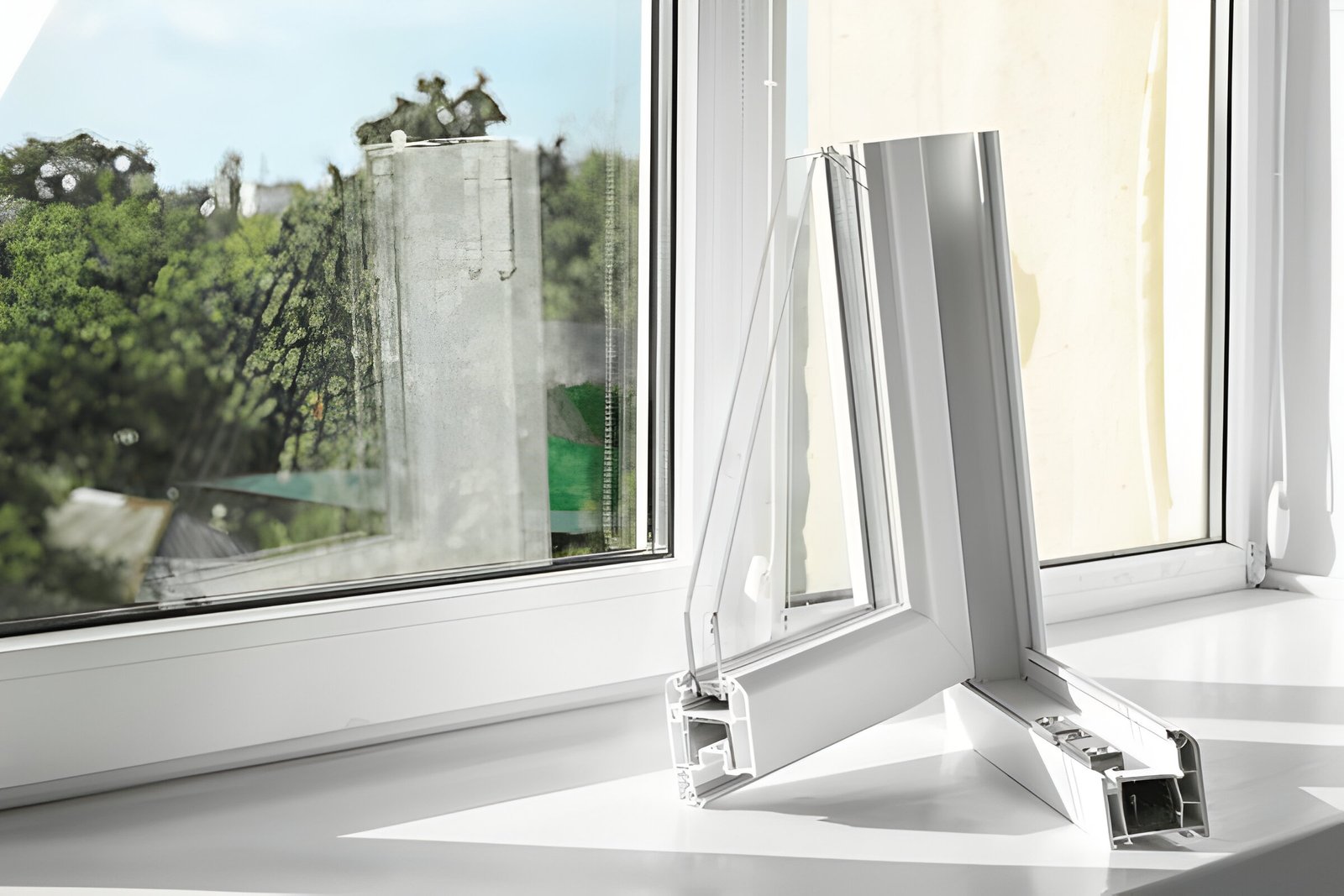Windows play a crucial role in our homes, affecting everything from energy efficiency to comfort. Double glazed windows have gained popularity in recent years, revolutionizing the way we think about insulation and climate control. These innovative window solutions offer a range of benefits that go beyond just keeping the cold out, making them a top choice for homeowners looking to upgrade their living spaces.
When it comes to window replacement, double glazed windows stand out as a smart investment. Also known as insulating glass units, they provide superior insulation compared to traditional single-pane windows. This introduction will explore the key aspects of double glazed windows, including their construction, advantages, and factors to consider when choosing the right ones for your home. By the end, you’ll have a clear understanding of why these windows have become a go-to option for energy-conscious homeowners.
What Are Double Glazed Windows?
Definition and components
Double glazed windows, also known as insulating glass units (IGUs), consist of two panes of glass set into a frame with a space between them. This intervening space, typically 6-12mm wide, is filled with air or an insulating gas such as argon, krypton, or xenon. The two panes are sealed together to create an airtight unit, enhancing insulation and reducing heat transfer.
The main components of a double glazed window include:
- Two glass panes
- Spacer bar
- Insulating gas or air
- Frame (uPVC, aluminum, or timber)
- Desiccant material
- Sealant
How double glazing works
Double glazing functions by creating an insulating barrier between the interior and exterior environments. As cold air hits the external pane, it transfers temperature to the insulating gas layer. This gas, being denser than air, slows down the conduction of heat between the two temperature zones.
The insulating gas, such as argon, has a 34% reduced thermal transfer rate compared to air. This means it transfers less of the temperature difference to the internal pane, which remains at a median temperature between the gas and the room. Similarly, when warm air from the room meets the internal pane, the gas layer slows the transfer of warmth from the inside out, helping to retain heat in the room.
Double glazing also helps to reduce noise transmission and condensation. The two panes of glass, combined with the insulating gas layer, absorb some of the sound energy and slow down vibration frequencies as they pass through the window. This results in diminished noise levels inside the room.
Types of double glazed windows
There are several types of double glazed windows available, each with unique features:
- Standard double glazed units (DGUs)
- Low-emissivity (Low-E) glass windows
- Acoustic double glazing
- Triple glazing
- Secondary glazing
- Slimline double glazing
- Laminated or toughened glass windows
- Vacuum insulated glazing
These various types cater to different needs, such as improved thermal efficiency, noise reduction, or enhanced security. The choice of double glazed window depends on factors like climate, property location, and specific requirements of the homeowner.
Benefits of Double Glazed Windows
Double glazed windows offer numerous advantages for homeowners, making them a popular choice for both new constructions and renovations. These windows consist of two panes of glass with an insulating layer of air or gas between them, providing superior performance compared to single-pane windows.
Improved energy efficiency
Double glazing significantly enhances a home’s energy efficiency. The air or gas trapped between the two glass panes acts as an effective barrier against heat transfer, reducing heat loss during winter and keeping homes cooler in summer. This insulation property leads to reduced energy consumption and lower utility bills. Some homeowners have reported energy savings of up to two-thirds during peak usage months after installing double glazed windows and updating appliances.
Enhanced noise reduction
One of the most notable benefits of double glazed windows is their ability to reduce outside noise. The dual-pane design with an insulating layer helps dampen sound waves, making it difficult for them to pass through. This construction can reduce sound levels by an impressive 20-65%, offering a potential noise reduction of up to 35 decibels. For those living near busy roads, airports, or train stations, this feature significantly improves the quality of life by creating a quieter indoor environment.
Increased home security
Double glazed windows provide enhanced security compared to single-pane alternatives. The two layers of glass, often combined with durable uPVC frames, offer increased resistance against breakage and forced entry attempts. Many double glazed windows feature multipoint locking systems, securing the window in multiple places with a single turn of the key. This design eliminates weak spots that burglars might exploit, making homes less vulnerable to intrusions.
Reduced condensation
Double glazing helps minimize condensation issues that often plague single-pane windows. The thermal barrier created by the double-pane design keeps the inner glass surface warmer, reducing the likelihood of moisture accumulation. This benefit not only improves visibility but also helps prevent the growth of mold and mildew, contributing to a healthier living environment.
Choosing the Right Double Glazed Windows
When selecting double glazed windows, homeowners should consider several factors to ensure they get the most suitable and energy-efficient option for their needs. These factors include frame materials, glass options, spacer types, and energy ratings.
Frame materials
The choice of frame material significantly impacts a window’s performance and esthetics. Common options include:
- UPVC: Affordable, low-maintenance, and energy-efficient, with a lifespan of about 20 years.
- Timber: Offers excellent insulation and a traditional look but requires regular maintenance.
- Aluminum: Strong and durable, but less energy-efficient unless thermally broken.
- Steel: Often found in period properties, particularly from the Art Deco era.
Glass options
The glass used in double glazed windows plays a crucial role in their energy efficiency:
- Standard dual pane: Two panes of glass with Low-E coatings and argon gas insulation.
- Triple pane: Three panes of glass with Low-E coatings and argon gas insulation.
- Low-E coatings: Microscopically thin coatings that manage light and heat transmission.
Spacer types
Spacers separate and support the glass panes, affecting the window’s overall performance:
- Warm edge spacers: Improve thermal performance and reduce condensation.
- Foam spacers: Highly energy-efficient but less durable than metal options.
- Stainless steel spacers: Strong and provide a tight seal, retaining insulating gas well.
Energy ratings
To understand a window’s energy performance, look for the following ratings:
- U-factor: Measures non-solar heat flow; lower values indicate better insulation.
- Solar Heat Gain Coefficient (SHGC): Indicates how much solar radiation is admitted; lower values mean better shading ability.
- Visible Transmittance (VT): Measures the amount of visible light transmitted; higher values mean more light.
- Light-to-Solar Gain (LSG): The ratio between VT and SHGC; higher numbers indicate more efficient glass types.
When choosing double glazed windows, consider these factors alongside your budget and specific needs to ensure the best combination of energy efficiency, comfort, and esthetics for your home.
Conclusion
Double glazed windows have a significant influence on home comfort and energy efficiency. These innovative solutions offer a range of benefits, including better insulation, noise reduction, and increased security. By creating a barrier between the interior and exterior environments, they help to maintain a comfortable temperature inside the home, leading to lower energy bills and a smaller carbon footprint. The variety of options available, from frame materials to glass types, allows homeowners to choose the best fit for their specific needs and budget.
To wrap up, investing in double glazed windows is a smart choice for homeowners looking to enhance their living spaces. The long-term savings on energy costs, coupled with improved comfort and security, make these windows a worthwhile addition to any home. As technology continues to advance, we can expect even more efficient and innovative double glazing solutions to emerge, further revolutionizing the way we think about home insulation and energy conservation.
FAQs
What are the disadvantages of double glazed windows?
Double glazed windows cannot be repaired. If the seal is not airtight, condensation may form between the panes, and since the windows are sealed units, they cannot be taken apart for repairs. In such cases, the entire window must be replaced, which can be costly.
Is it necessary to seal double glazed windows?
Yes, resealing double-glazed windows is advisable if you notice condensation inside the glass, drafts coming from the window, or visible signs of wear, tear, or gaps in the seal.
What is the expected lifespan of double glazed windows?
Double glazed windows typically last between 25-30 years, and potentially longer if they are installed in a sheltered location away from extreme weather conditions. However, windows exposed to harsh weather conditions may have a reduced lifespan of about 20 years.
How much heat loss occurs through double glazed windows?
Buildings typically lose about 18% of their heat through the windows. Double glazed windows lose heat twice as slowly as single-glazed windows, due to reduced radiation, convection, conduction, and air leakage.











